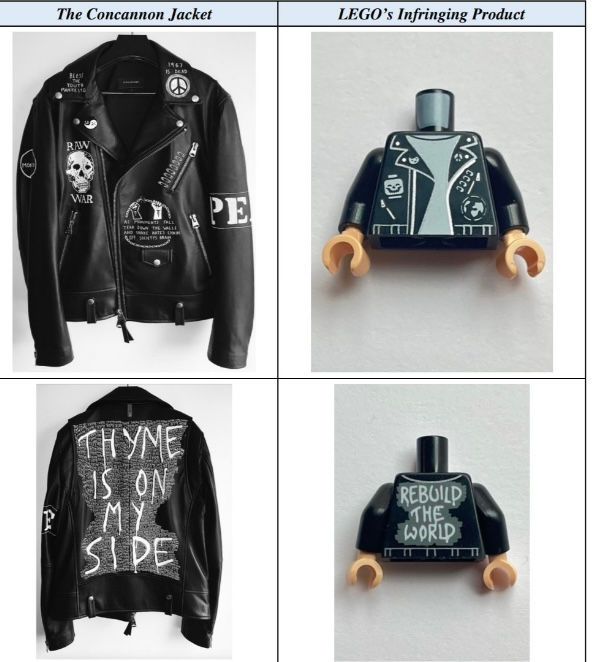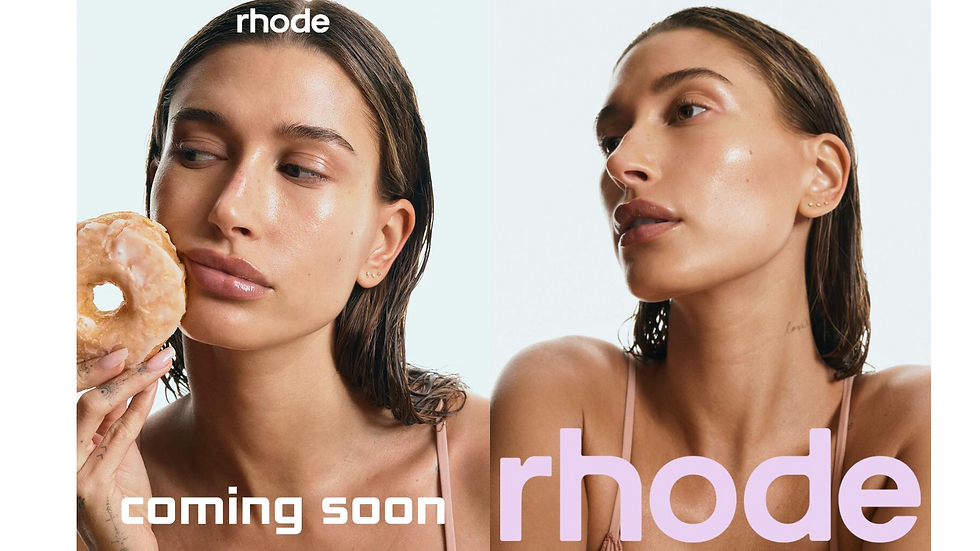The “THE” and “THE”
- Ariel Goldberg
- Jul 13, 2022
- 4 min read
Ready for a trademark tongue twister? The “THE” mark and the “THE” mark trademark applications were filed with the U. S. Patent and Trademark Office. Over the past years, fashion house Marc Jacobs and The Ohio State University have been in a trademark battle over the most common English word: “the”. However, On June 21, 20222, The Ohio State University successfully registered the “THE” for use on clothing and hats. Currently, Marc Jacobs trademark application is still pending for an identical “THE” mark for use on clothing and bags. Let’s examine the “THE” mess.

The Ohio State University's "THE" registered trademark.
“THE” Beginning
In 1986, Ohio State University rebranded itself as The Ohio State University to avoid the acronym “OSU” which was also used by Oregon State University and Oklahoma State University. The use of “the” became a joke which prompted The Ohio State University to be known as just “THE” including on official merchandise t-shirts and hats.
In the fashion scene, Marc Jacobs was designing to make “THE” fashion. In a humorous, and tongue in cheek design style, Marc Jacobs used the term “The” on products such as “The Tote Bag” and “The Backpack”. Eventually, Marc Jacobs created a sweater with “THE” written across the front.
“THE” Problem
The Ohio State University’s battle to register the “THE” mark was complicated. It took over three years to be granted due to the USPTO rejecting the trademark application for two reasons. First, the “THE” mark’s submitted specimen demonstrated ornamental use rather than functioning as a trademark to indicate source. Second, if Marc Jacobs’ “THE” mark was registered in the class 25 as well, there could be a refusal on likelihood of confusion. Marc Jacobs faced similar trademark registration issues.
Ornamental Use

The Ohio State University's submitted specimen.
In August 2021, the examining attorney for the USPTO argued that The Ohio State University’s use of the “THE” mark was a decorative or ornamental aspect of the clothing rather than a trademark that functions to identify and distinguish the source of the clothing. The Ohio State University submitted a specimen of a t-shirt with “THE” written on the upper center of the front in a large type. The USPTO’s attorney asserted that consumers would perceive “THE” as a decoration because of the location and size of the mark. Consumers may perceive smaller designs or type on pockets or the breast area of a shirt as trademarks that distinguish source so in comparison the large “THE” on the center appears as a t-shirt design rather than official branding. However, once a brand is well-established ornamental uses can be perceived as indicating the brand. In response, The Ohio State University demonstrated that the “THE” mark indicated source by submitting a label located on the inside of a t-shirt which showed the “THE” mark being used to distinguish source.

The "THE" mark used as a source indicator.
Similarly, Marc Jacobs’ trademark application with the USPTO for the “THE” mark for use on clothing and bags faced a refusal based on the use of the mark being decorative or ornamental rather than a source indicator. Marc Jacobs’ specimens submitted to the USPTO are pictured below. The first issue is that specimens that feature “THE BACKPACK MARC JACOBS” and “THE VELVETEEN JEAN JACKET MARC JACOBS” fail to show use of just the “THE” mark because the mark is not by itself or distinguished in any way as a source indicator. The second issue is that the specimen that shows “THE” written across a red sweater appears to be a sweater design which is similar to the issue The Ohio State University had with its t-shirt specimen.

Marc Jacobs' submitted submitted specimen.
Likelihood of Confusion
In May 2019, Marc Jacobs filed for its trademark application for the “THE” mark which the USPTO examining attorney identified as a reason for the potential refusal of The Ohio State University’s trademark application on likelihood of consumer confusion. In response, The Ohio State University initially opposed Marc Jacobs trademark registration claiming damages if the USPTO registered Marc Jacobs’ “THE” mark. Further, The Ohio State University asserted that it was using the “THE” mark as early as 2005 which was earlier than Marc Jacobs’ use. In August 2021, The Ohio State University withdrew their opposition proceeding.
Instead, The Ohio State University and Marc Jacobs settled that both the “THE” marks can co-exist in their own markets within clothing without causing marketplace confusion. Consequently, they amended their applications with The Ohio State University specifying the sports and collegiate athletics market and Marc Jacobs specifying the contemporary fashion market. Ultimately, both parties are relying on cooperation and different markets to yield different uses of the “THE” mark so that the likelihood of confusion and infringement is minimized.
“THE” END
The term “the” is a divisive term to trademark because of how common and, frankly, outrageous it seems. How can an entity “own” the term? Trademark rights are not an overall ownership of a word. Instead, trademark rights protect narrow and specific uses of the term that can cause source confusion. Ultimately, in theory, The Ohio State University cannot enforce trademark rights against “the” used in normal speech or trademarks that include “the”—even if the trademarks appear on clothing. In addition, trademark professor Alexandra J. Roberts states that “perfectly common single words are registered as TMs all the time”.
As for Marc Jacobs’ trademark application for the “THE” mark, only ‘the’ time will tell.




Comments